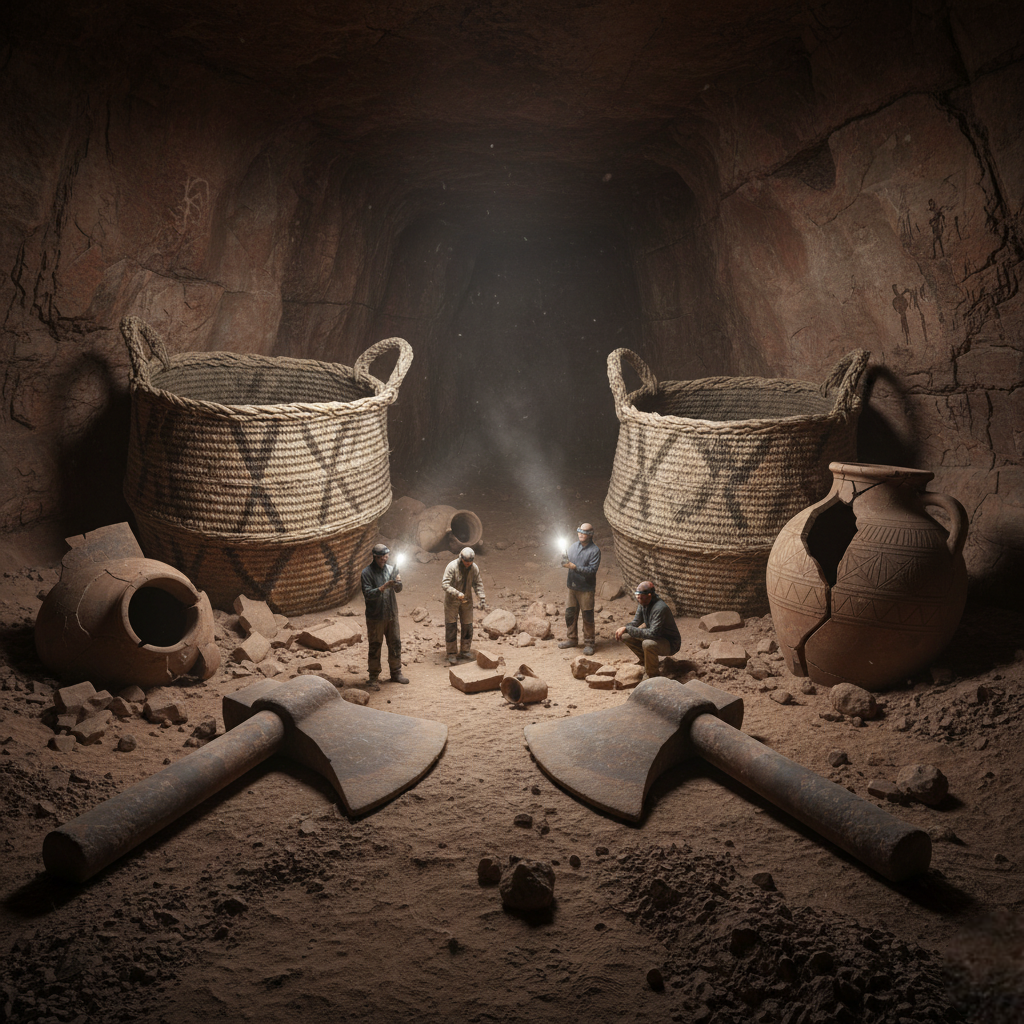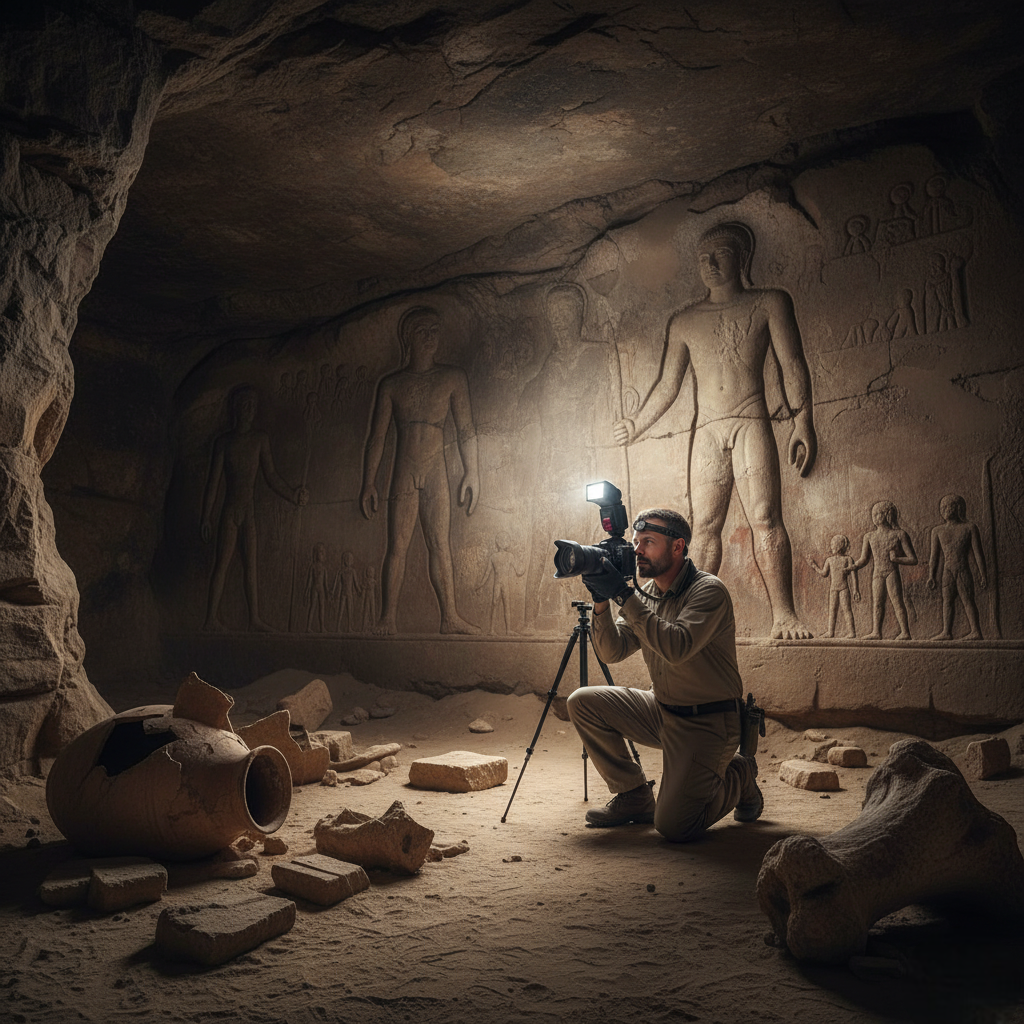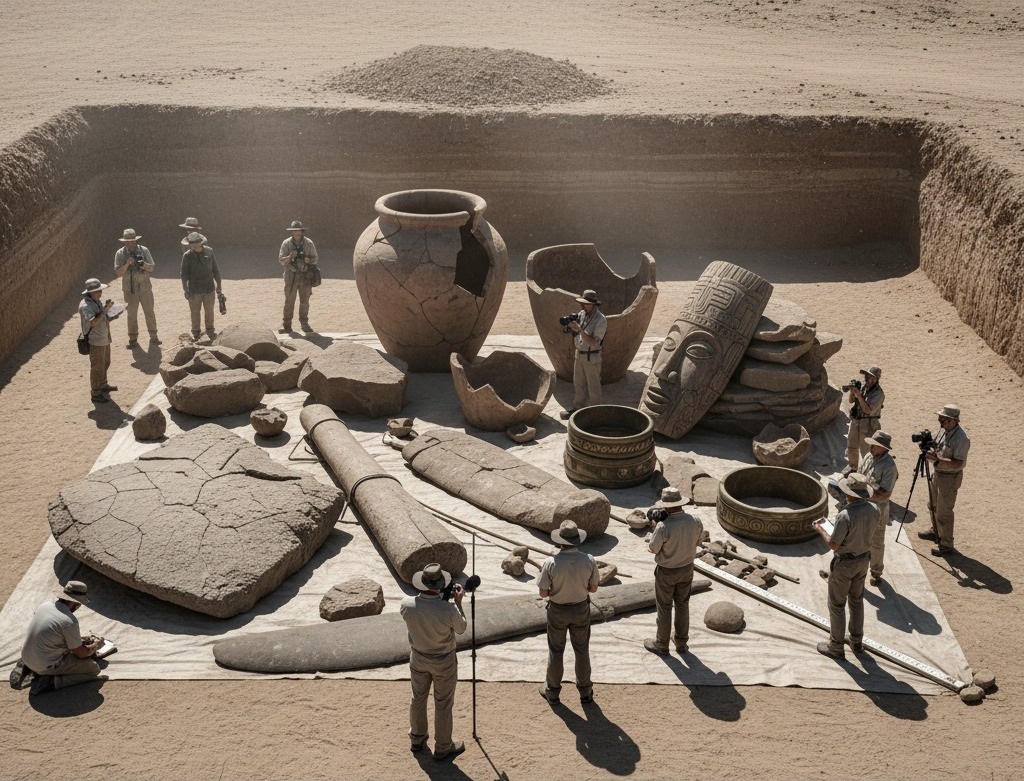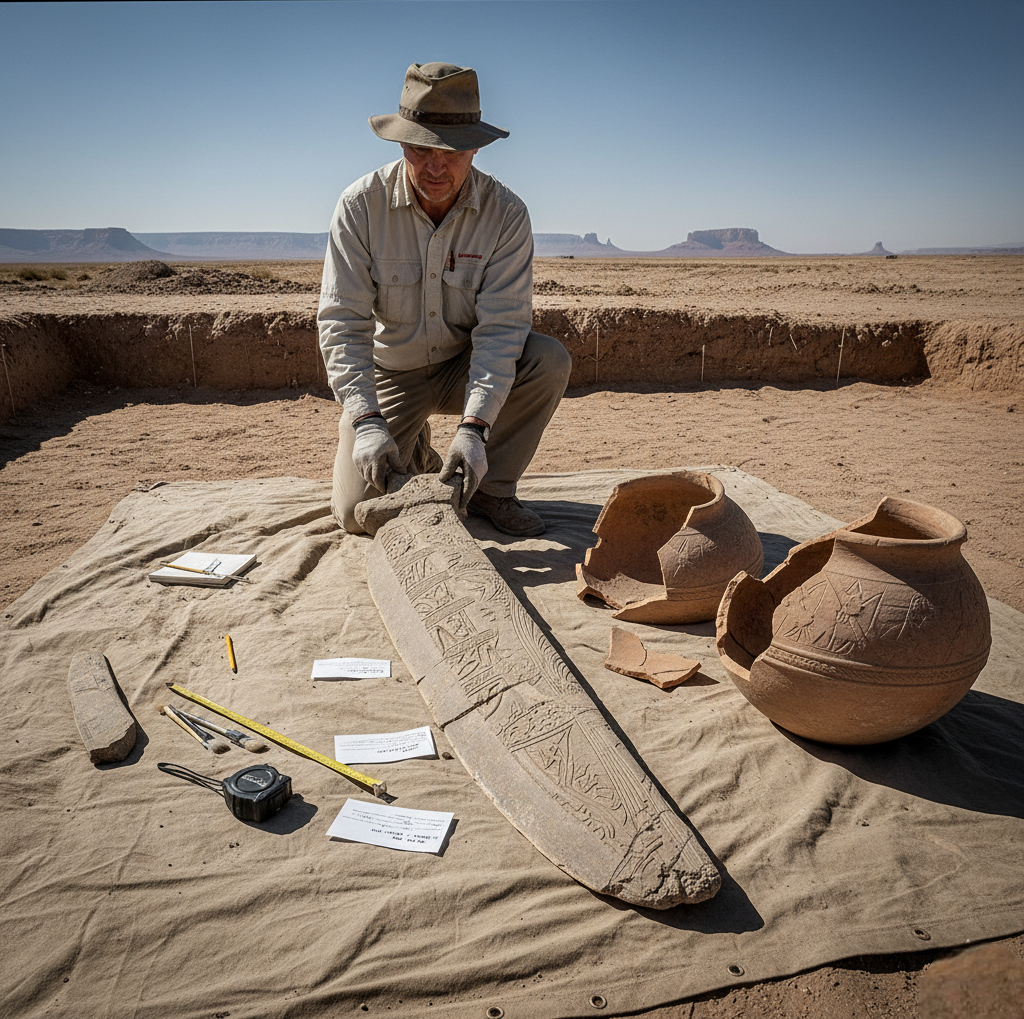The morning sun hung low over Nevada’s Black Mesa, turning the dust into a shimmering gold haze as Dr. Elias Konrad stepped out of the tent. The German archaeologist tightened the strap of his field camera and stared toward the excavation pit where the team had uncovered the impossible.
“Elias! You’ll want to see this,” called Dr. Sofia Alvarez, a Spanish anthropologist with a sharp mind and an even sharper instinct for ancient mysteries.

Elias trudged down the slope, boots crunching on dry earth. The scene below him looked unreal—a whole tarp spread with artifacts far too large for any human civilization ever recorded.
Sofia knelt beside a stone axe the size of a small car door. The surface was weathered but unmistakably shaped by intelligent hands. Beyond it lay pottery shards so massive that two researchers struggled to turn them over. A bone blade, longer than Elias’s arm, rested half-buried in sediment. Nearby, a ceremonial mask, sculpted from darkened wood, stared up with hollow eyes that seemed big enough to belong to a creature twice their size.
“Measurements?” Elias asked quietly.
“Forty-eight inches for the blade,” Sofia replied. “The pottery fragments suggest a vessel nearly six feet tall. And this…” She pointed toward a bronze bracelet with a diameter wide enough to slide over a barrel. “…this had to belong to someone enormous.”

Elias exhaled slowly. “Then the local legends weren’t exaggerations.”
Sofia shot him a look. “Let’s not jump to conclusions. Legends inspire imagination, not data.”
But even she couldn’t hide her excitement. The artifacts were too large, too consistent, too deliberate. This wasn’t a single odd piece—this was an entire cultural toolkit, scaled up as if designed for beings who could have lifted boulders like toy blocks.
A tall figure approached from behind them—Professor Viktor Petrov, a Russian historian known for dismissing anything that smelled of myth.
“I received your message,” Viktor said, adjusting his glasses. “What have you truly found here?”
Sofia gestured, letting the artifacts speak for themselves.

For a long time, Viktor said nothing. His fingers hovered above the enormous pottery fragment, tracing the curve without touching it. Then he crouched, examining the bone blade, the carved patterns, the stone tools.
“This,” he whispered, “is either the greatest archaeological hoax ever staged…”
“Or the greatest discovery humanity has ever made,” Elias finished.
Viktor looked up. “If this is genuine, someone… or some thing… lived here with capabilities far beyond our understanding.”
A silence settled over them—heavy, charged, like the desert waiting to exhale.
Suddenly, a shout erupted from deeper inside the pit.
“Doctor Konrad! We found murals!”
The three of them exchanged quick glances and hurried toward the call. Inside the newly uncovered chamber, faint light revealed massive wall carvings—humanoid figures with towering proportions, carrying the same monumental tools laid out on the tarps outside.

Elias felt his pulse quicken. This wasn’t imagination. This wasn’t coincidence.
Sofia shone her flashlight upward. “These figures… they’re enormous. Easily eight, maybe nine feet tall. And look—there are humans drawn beside them. Smaller. Much smaller.”
Viktor swallowed hard. “A shared society?”
“Or a collision of worlds,” Sofia murmured.
As the beam traced the mural, the three scholars stood mesmerized. The desert wind hissed outside the cavern entrance, a soft reminder that Black Mesa had kept its secrets for thousands of years.
Until now.
Elias lifted his camera. “Whatever this is, whatever they were… the world will never look at history the same way again.”
He pressed the shutter.
The flash lit up the chamber—
and the truth, long buried under sand and silence, finally stepped into the light.
